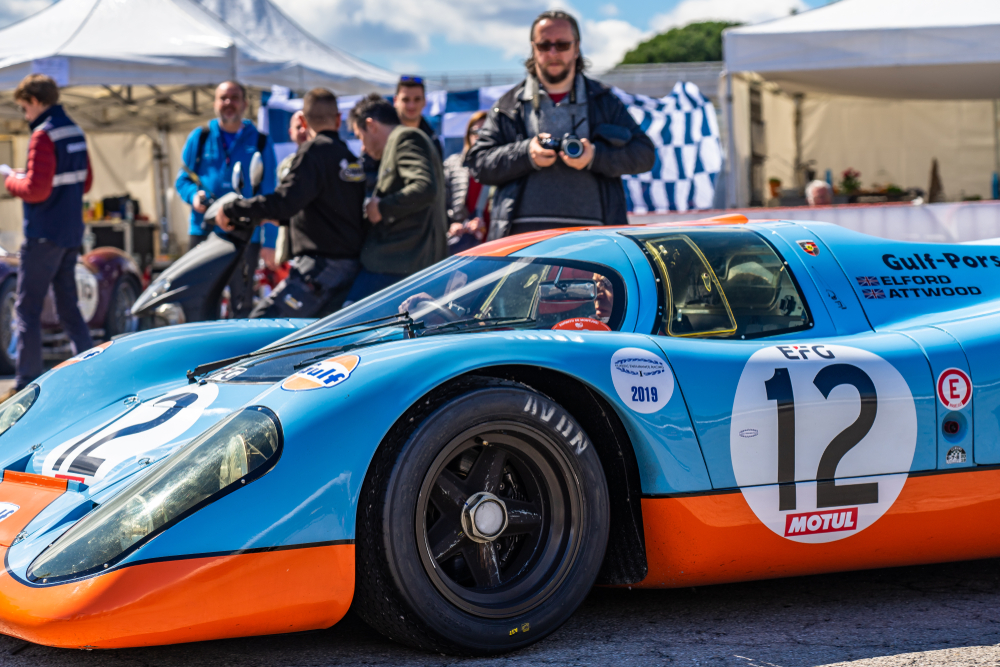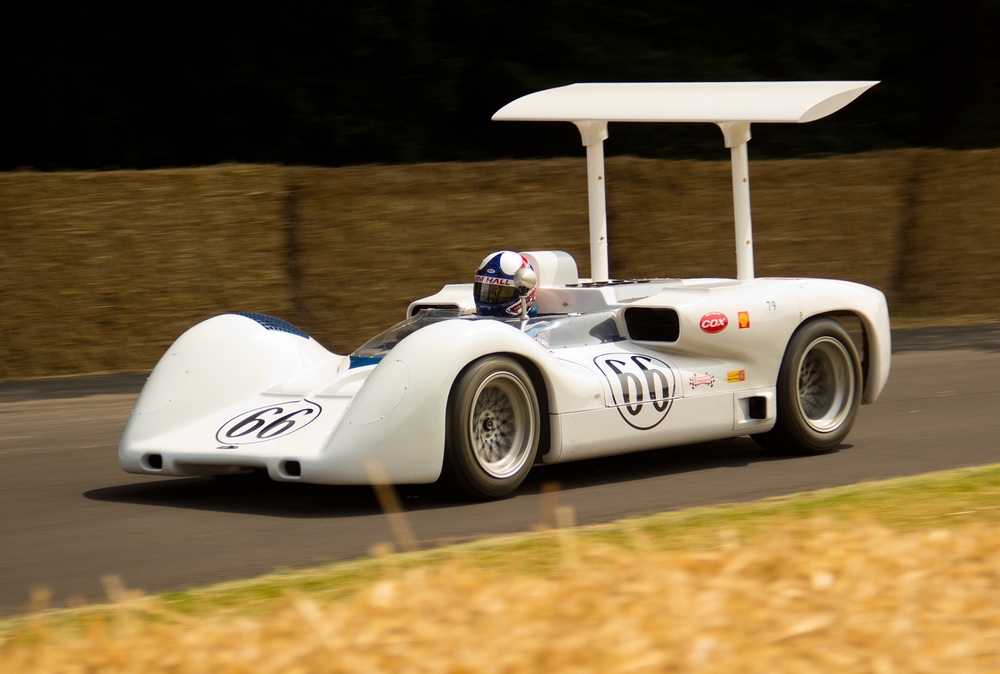Over the decades, advancements in aerodynamics, engine design, and materials have transformed racing cars into some of the most complex machines on the planet. Legendary innovations like turbocharging, disc brakes, and mid-engine layouts have roots in these historic cars, shaping both the sport and the cars we drive today. Some models became famous for their dominance on the track, while others made their mark with memorable colors, groundbreaking technology, or unforgettable stories of rivalry and triumph. The details of these cars not only tell the history of racing but also highlight the human drive to innovate, creating legends that continue to inspire and influence modern automotive engineering.
Contents
The First Race Car

The Benz Velo, created by Karl Benz in 1894, was the first car made for racing. While its 3.5 horsepower may seem modest by today’s standards, it symbolized a turning point in engineering and automotive ambition. Unlike other cars designed for everyday transportation, the Velo was crafted with performance in mind, establishing the foundation of motorsports. Its entry into the Paris-Rouen race ignited public interest in the potential of automobiles and spurred competition among manufacturers. This first-ever race car introduced the world to a sport that would eventually drive innovations in speed, design, and endurance.
The Lightweight Mazda 787B

The Mazda 787B made history by winning the 1991 Le Mans race, becoming the first and only Japanese car to win and the only car with a rotary engine to do so. Its lightweight design and distinctive sound, created by its four-rotor engine, made it an unforgettable competitor. This victory demonstrated the potential of alternative engine technology, with the 787B showcasing Mazda’s engineering ingenuity. Its success remains a high point in Mazda’s history, symbolizing the importance of innovation in motorsports and the global reach of the Le Mans legacy.
Aerodynamics Revolution

In the 1930s, Mercedes-Benz and Auto Union spearheaded a revolution by focusing on aerodynamics to enhance car speed. This era saw engineers optimizing body shapes to reduce air resistance, and using wind tunnels to fine-tune designs. These aerodynamic improvements allowed cars to achieve record-breaking speeds, setting new standards for the industry. This innovation emphasized that power wasn’t the only performance factor – how a car cut through the air was crucial. This transformation in design not only shaped the future of racing but also influenced the development of commercial vehicles worldwide.
BMW’s “Art Cars” Collection

BMW began its “Art Cars” project in the 1970s, inviting famous artists like Andy Warhol and Roy Lichtenstein to turn its race cars into canvases. This collaboration brought a unique fusion of art and speed, showcasing the beauty of race cars as more than just machines. The “Art Cars” have become cultural icons, celebrated in museums worldwide and representing a unique intersection of engineering and artistic expression. This project highlights the broader appeal of motorsports and BMW’s commitment to blending creativity with performance.
The “Silver Arrows” Origin

The “Silver Arrows” legend began when Mercedes-Benz and Auto Union stripped the paint off their cars to meet weight regulations in the 1930s. This unplanned change revealed the sleek, unpainted metal underneath, which became their signature look. The cars’ striking appearance and unprecedented speeds at the time earned them the nickname “Silver Arrows.” This story captures the ingenuity of early race teams and illustrates how racing pushed manufacturers to think creatively. Today, the “Silver Arrows” legacy is a symbol of German engineering excellence and racing prowess.
The “Humble” Mini Cooper

When the Mini Cooper, a compact British car, won the Monte Carlo Rally in 1964, it proved that size wasn’t everything in motorsports. This small but nimble car excelled in cornering and had impressive handling, allowing it to outmaneuver larger, more powerful cars on twisty rally routes. Its success marked a shift in racing dynamics, where agility and design could overcome raw horsepower. The Mini’s surprising win made it a symbol of clever engineering and cemented its place in racing history as a champion of smart, efficient design.
The 24-Hour Race Legacy

The Le Mans 24-Hour race, established in 1923, has become a crucible for testing endurance, innovation, and teamwork. Known for its challenging length and high speeds, the race demands technological advancements to ensure reliability and performance. Innovations such as headlights for night driving, brake pads, and even fuel efficiency improvements were honed through this grueling race. Winning Le Mans is considered one of motorsport’s highest achievements, showcasing a car’s durability and stamina. This legacy of endurance racing has left an indelible mark on automotive history.
Ferrari’s Start in Racing

Ferrari’s origin story began with Enzo Ferrari managing a racing team for Alfa Romeo before establishing his brand. The early successes of Ferrari’s V12 engines demonstrated the power of Italian engineering and the brand’s commitment to high performance. As a separate entity, Ferrari became a dominant force in Formula One, amassing championships and setting benchmarks. Ferrari’s storied rise captures Enzo Ferrari’s fierce ambition and symbolizes Italian excellence in motorsport. Ferrari’s legacy is synonymous with speed, luxury, and racing prestige.
Porsche 917’s Turbocharged Triumph

The Porsche 917 was one of the first cars to use turbocharging effectively, reaching speeds over 240 mph in the 1960s. The car’s immense power and aerodynamic efficiency helped it dominate endurance races, including Le Mans. This achievement underscored the role of turbocharging in boosting engine performance, influencing not only racing cars but also the broader automotive market. The 917 remains an icon of Porsche’s engineering prowess and serves as a benchmark in motorsport for the impact of forced induction technology.
Lotus and the Mid-Engine Revolution

Colin Chapman’s Lotus 25 introduced the mid-engine layout and monocoque chassis to Formula One, a design that placed the engine behind the driver for better balance and control. This layout improved weight distribution and handling, leading to better performance on the track. Chapman’s innovation changed the industry standard for Formula One and endurance cars, setting a precedent that is still followed today. The mid-engine revolution is a testament to Lotus’s commitment to innovation and forever changed the design philosophy of high-performance vehicles.
The Iconic Gulf Livery

The Gulf Oil livery, seen on the Ford GT40 at Le Mans, combined a distinctive blue and orange scheme that became one of the most recognizable designs in racing. This color scheme has since become iconic, symbolizing speed and endurance. The Gulf livery on the GT40 was immortalized through multiple Le Mans victories, solidifying its legendary status. Today, Gulf-liveried cars are prized by collectors and enthusiasts, representing an era of motorsport that combined style with performance.
Jaguar’s Disc Brake Invention

Jaguar introduced disc brakes on its C-Type in the 1950s, transforming racing by providing cars with superior stopping power. Disc brakes allowed for faster, more controlled braking, reducing lap times and increasing safety. This breakthrough was so effective that disc brakes soon became standard in all high-performance and consumer cars. Jaguar’s C-Type success at Le Mans underscored the effectiveness of this innovation, setting a new safety standard in racing that profoundly impacted the industry.
Rear Wings from Fighter Jets

The high-mounted rear wings, first used by Chaparral cars in the 1960s, borrowed principles from fighter jet aerodynamics to increase downforce on the track. By adding a rear wing, engineers could push the car down onto the road, improving grip and cornering speed. This innovation became essential in motorsports, as it allowed cars to handle higher speeds safely. Today, aerodynamics continues to be a crucial aspect of race car design, with rear wings remaining a testament to racing’s continuous borrowing from aviation.
The Mille Miglia’s Longest Race

Italy’s Mille Miglia, a thousand-mile race held from 1927 to 1957, tested drivers over rugged, public roads, making it one of the most grueling races in history. Known for its scenic Italian countryside and dangerous routes, it attracted top manufacturers and pushed cars to their limits. Mille Miglia’s victories were seen as the ultimate test of a car’s reliability and performance, shaping the reputation of brands like Ferrari and Alfa Romeo. Its legacy as a long-distance endurance race lives on, commemorated in historic rallies that celebrate Italy’s racing heritage.
The Power of Ford’s GT40

The Ford GT40 was developed specifically to beat Ferrari at Le Mans after a rivalry fueled by Ford’s failed attempt to buy Ferrari. With its powerful engine and advanced aerodynamics, the GT40 achieved this in 1966, becoming the first American car to win Le Mans. This iconic victory put American engineering on the map in European-dominated endurance racing. The GT40’s success remains a symbol of Ford’s competitive spirit and innovation, inspiring a legacy of performance vehicles in the Ford lineup.
This article originally appeared on MyCarMakesNoise.
More from MyCarMakesNoise
20 Ultra-Rare Ferraris You’ve Likely Never Heard Of

Ferrari is known for crafting some of the world’s most iconic and coveted cars, but among their impressive lineup, a few models stand out due to their extreme rarity. These rare Ferraris are not just cars; they are legends in automotive history. Read More.
17 Track-Ready Cars You Can Drive on the Road

If you’re looking for the thrill of the racetrack without giving up the ability to drive on regular roads, you’re in luck. Some cars offer the perfect balance of track performance and everyday usability. Read More.
11 Iconic Trucking Museums Celebrating Heavy-Duty Vehicles

Trucking museums offer a fascinating glimpse into the history and evolution of heavy-duty vehicles. These institutions preserve classic trucks and showcase the innovations that have shaped the industry over the decades. Read More.














